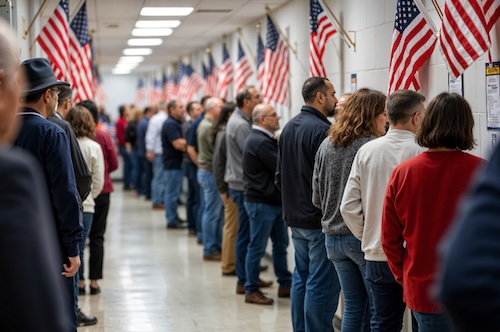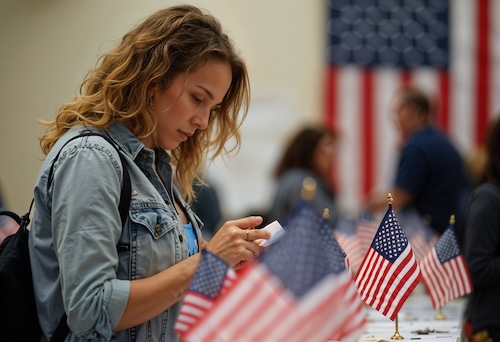Aaron King has spent over a decade in influencer marketing and has worked with talent and brands to set a cultural context and maximize audience engagement. He was recently promoted as the VP of Influencer, Growth, and Innovation at Rogers & Cowan PMK, a company founded in 1950, which has represented legends such as Paul Newman, Carol Grant, Rita Hayworth, and many more.
Listen to our podcast with Aaron where we discuss influencer marketing, what it stands for in the present times, and more.
Authenticity in influencer marketing is multi-faceted
“The most controversial opinion I have (on influencer marketing) is that everything needs to hinge on authenticity.
Now, when I say that, I kind of need to preface it slightly; not everything needs to hinge on what most people's one-dimensional view of authenticity. From time to time, I hear from brands that an influencer already needs to be an advocate for the brand, for it to be authentic.
I disagree entirely with that.
That's one facet of it. But it's not everything.”
Influencer Marketing always starts with the audience in mind
“For me, it's always (starts with the) audience.
The very first stage should understand the audience that you want to impact. And then you take it further.
You have to start understanding the cultural factors affecting them. (Research about) Where do they live? But when I say where they live, I mean, where do they live online so we can understand the best platforms to reach them on?
What I find interesting about taking that audience-first approach is that often it will throw you a curveball. There'll be insights in there that are (usually) completely unexpected.
Recently, I was researching the beauty space and looking at makeup artists. The research revealed that while makeup artists use Instagram as a source of inspiration, they rely very heavily on WhatsApp, which I found interesting. So, the direction we should take is tackling makeup artists via WhatsApp. And think about how we can make this true to the brand. How do we layer everything we need on top for it to make sense?”
Multi-channel presence is a must for brands to thrive
“Brands should take a multichannel approach in 2023 and beyond.
That said, taking a multichannel approach, for the most part, is quite costly. The volume of content you must put out, and the volume of influencers you must work with is challenging and requires a clear, concise strategy.
(For instance), content on TikTok versus content on Instagram does have to look very different, which is double the work. So it often does come down to resources rather than what's right or wrong. And if I had limited resources, I would pick where the largest share of my audience is because I genuinely believe that any brand can find the right tone for any platform.
It can be scary for brands. But we've seen some real success stories keeping Gen Z in mind.
If we look at brands like Duolingo, they do amazing on TikTok. I think Ryanair, as an airline, is doing an excellent job transforming what people think about their brand because it took it onto TikTok and made fun of it as people do. You couldn't do that on a platform like Instagram, but you can on TikTok.
(So), there are a lot of considerations. It's not a one size fits all approach.”
Is it better for brands to tell influencers what to post?
“I think as a starting point, a brand should never instruct an influencer verbatim on what to say. Whether you're a huge conglomerate or a startup TCC brand, you will never get maximum value from the influencer by doing that.
Many of our clients have a creative agency, and an influencer is just a mini scaled-down version of that creative agency. You hire (creative agencies) because you want their creative might and expression, etc. So we need to think about influencers like that.
That said, like with all briefs that will go to a creative agency, there need to be clear guardrails. Give the influencer creative freedom and creative expression, but they need to understand what the brand needs to take away from that.
Sometimes, it's slightly more complex. Most of the time, it's simple, thankfully.”
How are metrics measured in influencer marketing?
“The metrics we can measure have evolved in the last few years. I remember back in the day, everyone would die on a sword for engagement. And engagement is still an interesting metric. Don't get me wrong, it very much works, as you just mentioned, from a brand love perspective.
There aren't many studies out there at the moment that actually understand what the audiences are loving (and engaging). Is it because they like the product? Do they like the person? Or are they liking the creative?
We think about metrics in three core buckets at CPMK -
- We think about your kind of outputs, which is your harder metrics, so your impressions, your engagements, etc.
- Then we start thinking about your outcomes. So what did we want the audience to do, and did we achieve that?
- And then progress. Progress for us is working toward the bigger brand goals that may be long-term, not necessarily short-term like engagement, etc.”
How do brands go about influencer selection?
I think it all comes down to the selection of the tier of influencers based on what you want to achieve.
So top of funnel awareness in most cases, not in every case. Thinking about larger influencers is probably your best bet. Also, regarding media costs, it's cheaper if we break it down to those like hardcore CPM metrics mid-tier.
It's just about matching the right influences for the right funnel stage and getting them to do the right thing.
With our clients, we generally advise taking a multilayered approach. We rarely do only one thing unless it's a specific need like awareness.”
What makes an influencer marketing campaign impactful?
How do brands ensure that what they produce or put out is impactful and can retain its value over time? Aaron believes this is more to do with creatives.
“I'll use an example. We were at the genesis of the #mycalvins campaign. The team came up with that, rolled it out, and all these years later, it's still ongoing. It's instantly recognizable, it has that kind of simplicity, and it's creative, and they stick to their guns on how it should look. It's still there, we still see it on billboards, and we still see it online!
This is one route.
However, most times, we often utilize influencers to tackle a very specific moment in time. (Let’s say), a new product launch. We will (then) use them again for the next product launch, and so on! We don't always think about the long-term viability of a specific piece of content.
That said, similar to the Calvin Klein example, when building campaigns for our clients, can we build a kind of creative anchor point that we can always come back to?”
An example of an interesting influencer marketing campaign
“Marks & Spencer has a famous birthday cake in the shape of a caterpillar. It's called Colin, the Caterpillar.
Aldi, the supermarket chain in a slightly different part of the spectrum, released a similar cake called Cuthbert. And so naturally, there was a media firestorm about it, and people online everywhere were talking about it.
Normally, a brand would be like - Oh, my God, what the hell is happening? This is the worst thing ever. But not M&S’s agency!
They were super reactive in a very positive way. They started posting memes like Free Cuthbert. And it was just genius. Like taking that kind of very reactive approach in a way that is native to the audience as well.
Normally, when someone's taking you to court, you don't start posting memes saying, Please stay away from my cake. And it was just great. Every time I look at that case study, I giggle because it literally is genius!”
Proactive vs. Reactive creative
“Generally, with influencer and creator marketing, we will have to start thinking about creative in two ways -
- We're going to have to start thinking about proactive creative - What is the new creative, the shape message, etc.
- But with the amazing and crazy success of TikTok, we also need to react to trends in real time. I mean, to me, I love to have a good couple of weeks before a campaign goes live to get it all buttoned down. You can't do that when you've been reactive for a couple of weeks. The trend is over. So I think, generally speaking, people will have to be a bit braver if we want to use a trend as a catalyst to put our content out there, and we see it so interesting. I don't think many brands have really done a great job of it yet because you'll see, like, this trend-based content three months after the trend has finished. So it's an interesting challenge for everyone.”
Which influencer would you take out for lunch?
“Maybe one of the virtual influencers. Obviously, that isn't possible, but I'm just so intrigued with virtual influencers and the ethical and moral dilemmas and the quagmire you could find yourself getting into. I'd love to figure all of that out.”
Watch the entire episode here -

.avif)







